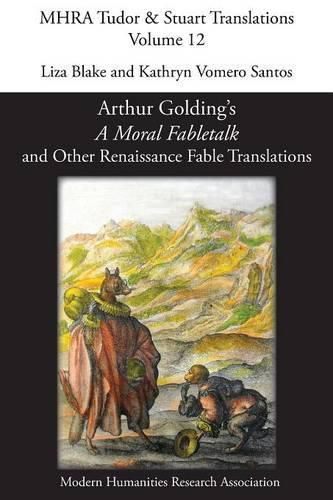Readings Newsletter
Become a Readings Member to make your shopping experience even easier.
Sign in or sign up for free!
You’re not far away from qualifying for FREE standard shipping within Australia
You’ve qualified for FREE standard shipping within Australia
The cart is loading…






This title is printed to order. This book may have been self-published. If so, we cannot guarantee the quality of the content. In the main most books will have gone through the editing process however some may not. We therefore suggest that you be aware of this before ordering this book. If in doubt check either the author or publisher’s details as we are unable to accept any returns unless they are faulty. Please contact us if you have any questions.
This volume brings together five translations of Aesopian fables that range from the beginning to the end of the English Renaissance. At the centre of the volume is an edition of the entirety of Arthur Golding’s manuscript translation of emblematic fables, A Morall Fabletalke (c. 1580s). By situating Golding’s text alongside William Caxton’s early printed translation from French (1485), Richard Smith’s English version of Robert Henryson’s Middle Scots Moral Fabillis (1577), John Brinsley’s grammar school translation (1617), and John Ogilby’s politicized fables translated at the end of the English Civil War (1651), this book shows the wide-ranging forms and functions of the fable during this period. Because Renaissance fables were not only textual but also visual, the edition includes the original images (woodcuts and engravings) designed to accompany the fables. The variety of fable translation practices included in this volume expands our understanding of literary translation in the early modern period. Likewise, the diversity of what gets counted as a fable, as the introduction shows, has implications both for the history of the Aesopian fable, and for the history of reading and thinking about fiction in the English Renaissance.
$9.00 standard shipping within Australia
FREE standard shipping within Australia for orders over $100.00
Express & International shipping calculated at checkout
This title is printed to order. This book may have been self-published. If so, we cannot guarantee the quality of the content. In the main most books will have gone through the editing process however some may not. We therefore suggest that you be aware of this before ordering this book. If in doubt check either the author or publisher’s details as we are unable to accept any returns unless they are faulty. Please contact us if you have any questions.
This volume brings together five translations of Aesopian fables that range from the beginning to the end of the English Renaissance. At the centre of the volume is an edition of the entirety of Arthur Golding’s manuscript translation of emblematic fables, A Morall Fabletalke (c. 1580s). By situating Golding’s text alongside William Caxton’s early printed translation from French (1485), Richard Smith’s English version of Robert Henryson’s Middle Scots Moral Fabillis (1577), John Brinsley’s grammar school translation (1617), and John Ogilby’s politicized fables translated at the end of the English Civil War (1651), this book shows the wide-ranging forms and functions of the fable during this period. Because Renaissance fables were not only textual but also visual, the edition includes the original images (woodcuts and engravings) designed to accompany the fables. The variety of fable translation practices included in this volume expands our understanding of literary translation in the early modern period. Likewise, the diversity of what gets counted as a fable, as the introduction shows, has implications both for the history of the Aesopian fable, and for the history of reading and thinking about fiction in the English Renaissance.